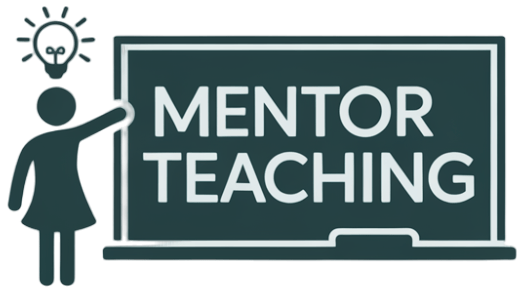Welcome to our article on the effective “5Ws” lesson plan strategy. In this series, we will explore how incorporating the 5Ws – who, what, when, where, why – into lesson plans can enhance student learning and engagement.
Lesson plans are an essential component of effective teaching. They provide a roadmap for educators, outlining objectives, activities, and resources to guide instruction. By incorporating the 5Ws into lesson planning, teachers can create a structured and comprehensive approach to teaching various subjects.
But what exactly are the 5Ws? The 5Ws – who, what, when, where, why – are basic interrogative words that form the foundation of gathering information. They assist in understanding the essential details of any topic or concept.
In this series, we will explore how students can use the 5Ws strategy in various aspects of their learning journey. From writing accurate definitions of the 5Ws to reading and presenting important information using this strategy, students will develop a deeper understanding of key concepts.
The 5Ws strategy is not limited to a single subject but can be applied across multiple disciplines, including math, science, language arts, and social studies. By incorporating the 5Ws into their learning process, students will become better critical thinkers, improving their ability to find and analyze important information.
Throughout this series, we will explore how teachers can implement the 5Ws strategy in the classroom, the benefits it offers to students, and steps for effective implementation. We will also delve into how the 5Ws strategy can expand sentence writing and be integrated into literacy instruction.
Join us on this educational journey as we uncover the power of the 5Ws lesson plan strategy.
Implementation of the 5Ws Strategy in the Classroom.
Implementing the 5Ws strategy in the classroom is a valuable way to enhance students’ critical thinking and information gathering skills. By engaging in various activities that practice and model the use of this strategy, students can develop a deeper understanding of key concepts and improve their ability to extract important information.
During NLP lesson plans, teachers can introduce the 5Ws strategy and its importance in gathering details and analyzing information. Lesson plan ideas can encompass a wide range of subjects, such as reading articles, newspapers, and math problems. Students can then apply the 5Ws strategy to these materials, actively seeking out the answers to the who, what, when, where, and why questions.
The lesson planning process includes creating lesson plan templates that incorporate the 5Ws strategy as a central objective. This ensures that students have clear lesson plan objectives and understand the structure of the lesson. By incorporating the 5Ws into the lesson plan structure, teachers provide a framework for students to follow, guiding them towards effective information gathering.
Activities Using the 5Ws Strategy
- Reading articles and identifying the who, what, when, where, and why.
- Analyzing newspaper reports and discussing the key details.
- Solving math problems by identifying the relevant information.
Through these activities, students learn to identify key details, ask relevant questions, and extract essential information. The teacher’s role is crucial in providing feedback and encouraging students to utilize the 5Ws strategy in their reading and core subjects.
By incorporating the 5Ws strategy into the curriculum, educators can enhance students’ ability to comprehend and process information effectively. This strategy not only improves critical thinking skills but also promotes active engagement in the learning process.
Next, we will explore the benefits of the 5Ws strategy and how it contributes to students’ overall learning experience.
The Benefits of the 5Ws Strategy.
The 5Ws strategy offers numerous benefits to students, helping them to enhance their comprehension skills, summarize articles effectively, and develop high-level questioning abilities. By utilizing this strategy, students can organize their thinking, add depth and context to their writing, and independently apply the 5Ws to various types of writing such as newspaper articles and reports.
One of the key advantages of the 5Ws strategy is its ability to improve students’ comprehension skills. By encouraging students to answer questions related to the who, what, when, where, and why of a given topic, the strategy prompts them to engage with the material on a deeper level. This critical thinking process enhances their understanding of the subject matter and allows them to make connections between different pieces of information.
Furthermore, the 5Ws strategy helps students summarize articles effectively. By identifying the key elements of a text, including the main characters, events, and essential details, students can accurately condense the information into a concise summary. This skill is valuable in both academic and real-life contexts, as it enables students to extract the most important information from a piece of writing.
Developing high-level questioning skills is another significant benefit of the 5Ws strategy. As students engage in the process of asking and answering the 5Ws questions, they learn to think critically, evaluate information, and pose insightful inquiries. These skills are crucial for academic success, as well as for future professional endeavors where critical thinking and effective question formulation are essential.
Incorporating the 5Ws strategy into writing assignments adds depth, context, and interest to students’ work. By considering the who, what, when, where, and why aspects of their writing, students develop a more comprehensive and well-rounded understanding of their subject matter, resulting in more nuanced and compelling pieces of writing.
In conclusion, the benefits of the 5Ws strategy are vast, spanning from improved comprehension skills to enhanced summarization and questioning abilities. This strategy empowers students to think critically, organize their thoughts effectively, and produce writing that is rich in content. By incorporating the 5Ws strategy into lesson plans and utilizing the available teaching resources and educational materials, educators can set clear lesson plan objectives and provide students with a valuable tool for academic success.
Steps for Effective Implementation of the 5Ws Strategy.
When it comes to incorporating the 5Ws strategy into your lesson planning, there are four main steps to follow. These steps will help ensure that your students understand and can effectively utilize the 5Ws strategy in various learning activities and subjects.
- Step 1: Reading Articles
- Step 2: Discussing the 5Ws with Students
- Step 3: Modeling the Strategy
- Step 4: Providing Opportunities for Practice and Application
Start by providing your students with articles or texts that showcase the 5Ws strategy in action. Encourage them to identify and highlight the who, what, when, where, and why within the texts. This step will help familiarize students with the concept and purpose of the 5Ws strategy.
Engage your students in meaningful discussions about the importance of the 5Ws strategy. Encourage them to share their understanding of each W and how it contributes to finding key information. This step will enhance their comprehension of the strategy and its relevance.
Show your students how to apply the 5Ws strategy through modeling. Demonstrate how to analyze a piece of text and identify the relevant Ws. This step allows students to witness the strategy in action and understand its practical application.
Give your students ample opportunities to practice and apply the 5Ws strategy in different contexts and subjects. Provide them with worksheets, activities, and projects that require them to use the strategy to extract key information. This step reinforces their understanding and mastery of the 5Ws strategy.
By following these steps, you can effectively implement the 5Ws strategy in your classroom and support your students in developing strong critical thinking and comprehension skills.
Examples and Adaptations for Different Writing Blocks
When implementing the 5Ws strategy in different writing blocks, it is important to provide examples and adaptations that align with specific subject areas. Here are a few examples:
| Subject | Example Activity | Adaptations |
|---|---|---|
| Language Arts | Reading comprehension exercises with short stories | Reading and analyzing poetry or plays using the 5Ws strategy |
| Math | Solving word problems with real-life scenarios | Applying the 5Ws strategy to analyze data sets or graph interpretations |
| Science | Investigating scientific experiments and observations | Using the 5Ws strategy to analyze theories or research articles |
| Social Studies | Studying historic events and their impact | Researching and presenting on current events using the 5Ws strategy |
These examples and adaptations demonstrate the versatility of the 5Ws strategy and its applicability across various subjects. By tailoring the strategy to specific writing blocks, you can engage your students and deepen their understanding of the content.
Using the 5Ws Strategy to Expand Sentences.
The 5Ws strategy is a powerful tool that can be utilized to expand sentences by adding details and information. By incorporating this strategy into writing instruction, students can enhance their sentence writing skills and improve the depth and context of their compositions.
When using the 5Ws strategy to expand sentences, students are encouraged to answer the who, what, when, where, why, and how about the subject they are writing about. This helps them think critically, question their ideas, and gain a deeper understanding of the topic at hand.
Implementing the 5Ws strategy in sentence expansion requires students to consider various aspects of the subject they are describing. For example:
- Who: Who is involved in the subject? Who are the key players?
- What: What is happening? What are the important details or characteristics?
- When: When did it occur? When will it happen?
- Where: Where did it take place? Where is it located?
- Why: Why did it happen? Why is it important or significant?
- How: How did it occur? How does it work?
By answering these questions, students can enrich their sentences with specific information, providing readers with a clearer and more detailed picture of the subject matter.
To illustrate the effectiveness of the 5Ws strategy in expanding sentences, consider the following example:
| Original Sentence: | Karen went to the store. |
|---|---|
| Expanded Sentence using the 5Ws Strategy: | Karen, a dedicated piano teacher, went to the store after work to buy musical note books. |
As you can see, by incorporating additional details and information related to the 5Ws, the sentence becomes more engaging and informative. This enhanced sentence writing skill can be applied across various genres and writing tasks, enabling students to create more compelling narratives, descriptive paragraphs, and persuasive arguments.
By using the 5Ws strategy to expand sentences, students are able to develop their writing skills and produce more descriptive and meaningful compositions. This strategy can be incorporated into lesson plans and teaching resources to provide students with the necessary tools and techniques to enhance their writing abilities.
Integrating the 5Ws Strategy in Literacy Instruction.
The 5Ws strategy is a versatile tool that can be seamlessly integrated into literacy instruction to improve reading and writing skills. By incorporating this strategy into lesson planning and instruction, teachers can effectively enhance reading comprehension, develop effective writing strategies, and promote critical thinking among their students.
When used in literacy instruction, the 5Ws strategy helps students engage with texts more deeply and make connections between details and main ideas. By encouraging students to ask and answer the who, what, when, where, why, and how questions, the strategy fosters a comprehensive understanding of the text and strengthens reading comprehension skills.
Moreover, the 5Ws strategy facilitates the development of effective writing strategies. By exploring the key elements of a story or informational text, students can gather essential information and organize their thoughts coherently. This strategy empowers students to write more comprehensive and structured pieces by expanding their understanding of the text and conveying ideas in a logical manner.
Critical thinking is also fostered through the integration of the 5Ws strategy in literacy instruction. By encouraging students to analyze texts and identify key information, the strategy prompts students to think critically about the subject matter. As students engage in this process, they develop the ability to evaluate, interpret, and synthesize information, which is crucial for their academic and personal growth.
Example: Integrating the 5Ws Strategy in a Literature Lesson
Here’s an example of how the 5Ws strategy can be integrated into a literature lesson:
| Activity | Description |
|---|---|
| Read Aloud | The teacher reads a short story aloud to the class. |
| Discussion | The teacher initiates a class discussion, asking questions that prompt students to identify the who, what, when, where, why, and how of the story. |
| Group Activity | Students work in small groups to create a graphic organizer or chart that summarizes the key elements of the story, incorporating the 5Ws. |
| Individual Writing | Each student writes a short paragraph or essay summarizing the story, using the 5Ws strategy to provide comprehensive details. |
The Literacy Dive Podcast is an excellent resource for educators seeking actionable steps and strategies to implement the 5Ws strategy effectively. Hosted by literacy expert Megan Polk, the podcast explores various aspects of literacy instruction, providing valuable insights and practical tips for teachers to enhance their teaching practices.
By integrating the 5Ws strategy in literacy instruction, teachers can empower their students to become critical readers, effective writers, and analytical thinkers. This strategy not only enhances reading comprehension and writing skills but also fosters a love for learning and a deeper understanding of the world around us.
Conclusion
The 5Ws strategy is a powerful tool that can greatly enhance critical thinking, comprehension, and writing skills in the classroom. By incorporating this strategy into their lesson planning and instruction, teachers can effectively support their students in developing a deeper understanding of content and improving their ability to express themselves through writing.
The use of the 5Ws strategy helps students to summarize articles, organize their thinking, and develop high-level questioning skills. It adds depth, context, and interest to their writing and enhances their overall comprehension abilities. Moreover, students can apply this strategy independently and utilize it in various types of writing, such as newspaper articles and reports.
By implementing the 5Ws strategy, teachers can encourage students to think critically and ask meaningful questions. This strategy not only expands students’ sentence writing skills but also helps them develop their ability to generate details and information. It is a valuable teaching resource that can greatly benefit students’ educational journey.
In conclusion, the 5Ws strategy is a valuable addition to any teacher’s lesson plan. Its implementation can lead to improved critical thinking, comprehension, and writing skills among students. Through the use of educational materials and teaching resources that support the integration of this strategy, teachers can guide their students towards a greater understanding of content and an enhanced ability to express themselves effectively.




